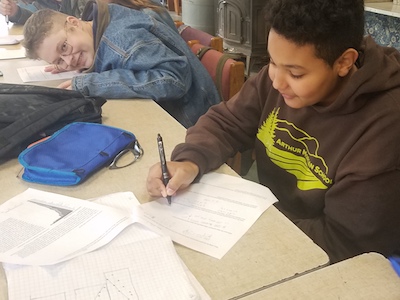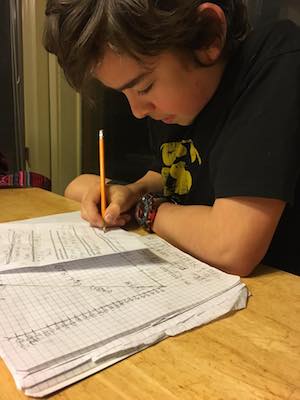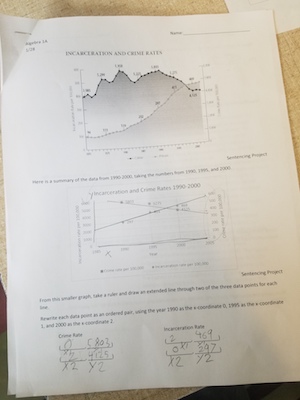Making Math Relevant: Black Lives Matter at School Week

Up until middle school, students understand how math is relevant. Combining numbers, multiplying fractions or calculating the area of a shape are skills that students understand will help them make sense of the real world. But walk into most middle school algebra classes, and you will invariably hear the question, “When am I ever going to use this stuff?” The applications of solving for x, linear equations, and exponents sometimes seem less obvious.
But what if teachers could make algebra feel more relevant? And not just to students with science or business aspirations? What if they could show how analyzing data on a graph helps young people gain a much deeper understanding of major social movements that are occurring around them? What if students understood how that data could be used to make better policies for their future?
Teaching Social Justice with Algebra
 This week is Black Lives Matter at School Week of Action. All around the country, teachers are leading lessons that highlight the 13 principles of Black Lives Matter. Most of these classes are probably social studies, language arts, and art classes. Students are learning about racism past and present, highlighting the perspectives and experiences of black people, and undertaking actions for creating change. At Arthur Morgan School, students are also using algebra to say that Black Lives Matter.
This week is Black Lives Matter at School Week of Action. All around the country, teachers are leading lessons that highlight the 13 principles of Black Lives Matter. Most of these classes are probably social studies, language arts, and art classes. Students are learning about racism past and present, highlighting the perspectives and experiences of black people, and undertaking actions for creating change. At Arthur Morgan School, students are also using algebra to say that Black Lives Matter.
Students in Algebra 1A have recently been studying linear relationships. They’ve been plotting points, finding slopes, and writing y=mx+b equations. These have a lot of applications to science and economics, which the students explored. This week, however, they took a break from those examples and talked about how algebra shapes social movements. Inspired by Black Lives Matter at School Week of Action, they took a look at the US prison system. They examined graphs and hard data, looked critically at the choices involved in gathering that data, discussed how to interpret it, and assessed policies.
Going Deep on Mass Incarceration
The week started by exploring some information about the rates of crime and incarceration in the US. The goal of this lesson was two fold. They were introduced the problem of mass incarceration but they were also asked to calculate the slope of the changing incarceration and crime rates over short periods of time. As a clever xkcd webcomic points out, society loves to assume linear change when predicting future trends. By writing linear equations and following that assumption to its logical conclusions, they learned to be wary of these types of predictions.
 Next, the students looked at the racial make up of the prison population. By comparing different ways of disaggregating the data, students were able to see how the same information could be made to favor certain points of view.
Next, the students looked at the racial make up of the prison population. By comparing different ways of disaggregating the data, students were able to see how the same information could be made to favor certain points of view.
The algebra class then looked at how the demographics of the prison population has been changing over time. Again, they examined how people draw conclusions depends on how the data is presented. They asked questions about what parts of the story could be missing or obscured. They thought about what additional information they would need before drawing conclusions.
Finally, the students examined a New York Times article about immigration and crime rates. Students delved into the article’s infographics about how the rates of immigration and crime have changed in different cities across the US. They were asked to think about what factors might influence someone’s opinions about immigration, including their personal experiences. Then they thought about how to approach a conversation with someone who had different opinions. Finally, they wrote about whether they thought expanding the border wall was an effective way to prevent crime.
Real Answers
At first glance, these daily lessons might look out of place in a math classroom. Many of the questions didn’t even require a number in their answer. When there were numbers, the students had to think about what they meant. They demonstrated that they could do the algebra, but also gained a deeper appreciation for how math continues to be relevant.
-by Kavita Hardy
